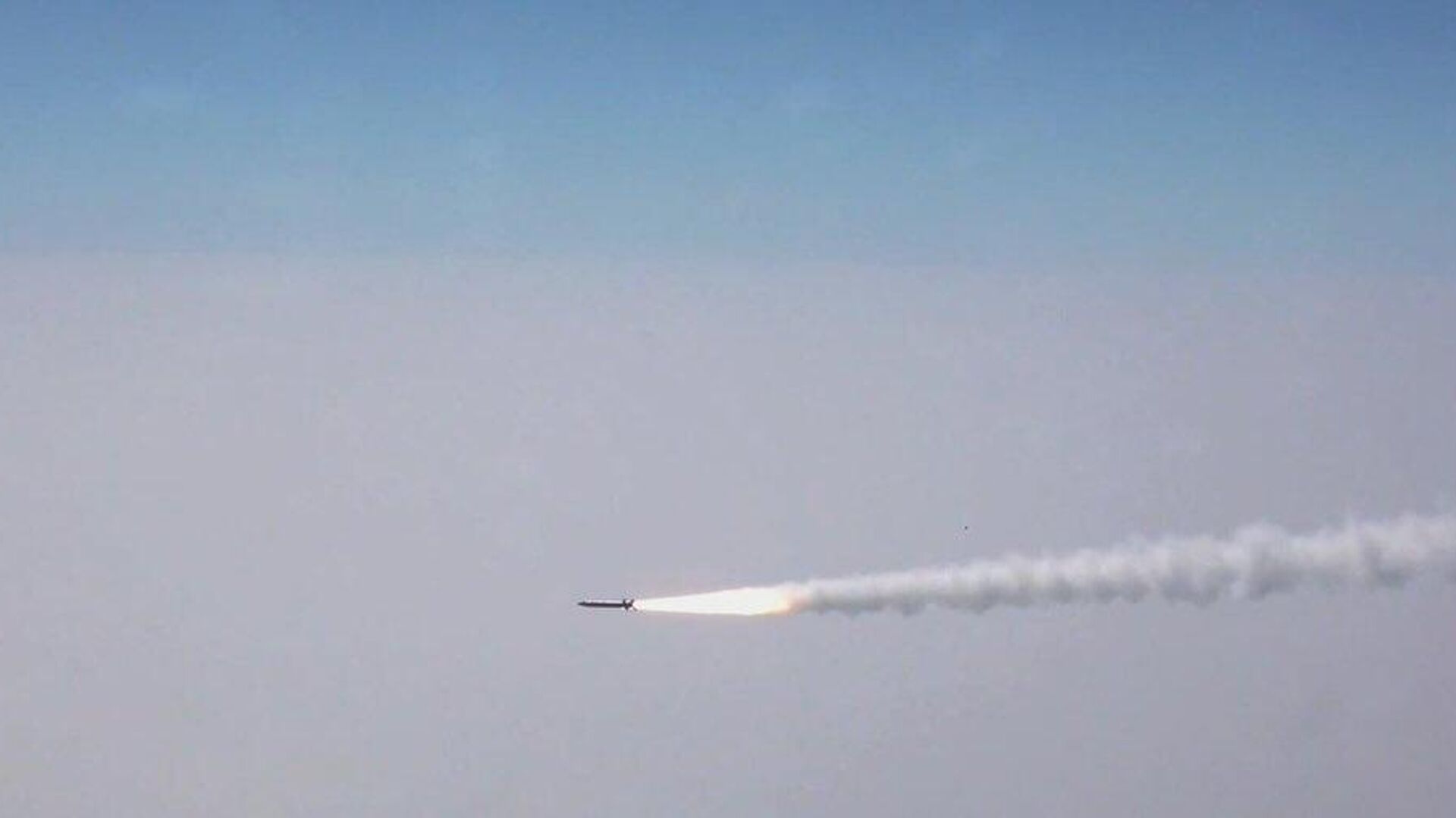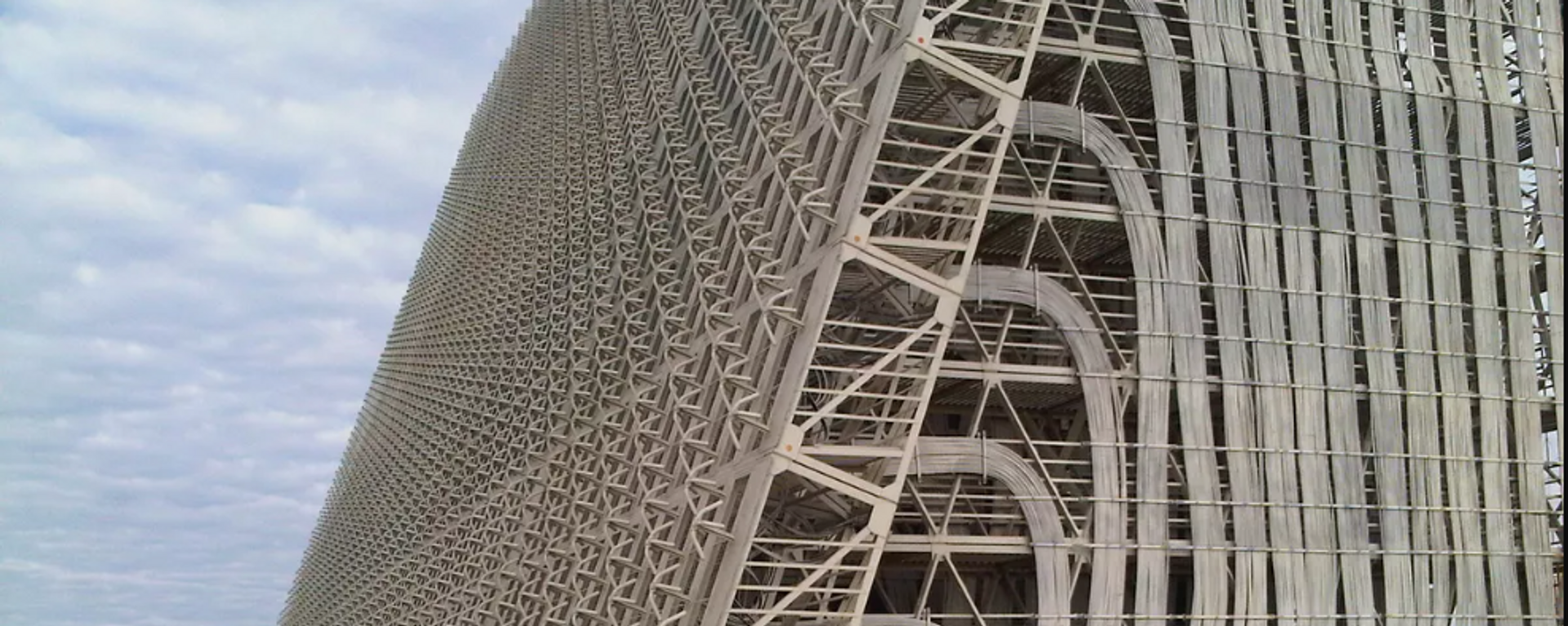https://sputniknews.in/20241213/find-out-what-air-defence-systems-solidly-safeguard-indias-skies-8544994.html
Find Out What Air Defence Systems Solidly Safeguard India's Skies
Find Out What Air Defence Systems Solidly Safeguard India's Skies
Sputnik India
India reportedly is nearing a multi-billion dollar deal for Russia's Voronezh radar system, potentially reshaping regional military dynamics. Will it make... 13.12.2024, Sputnik India
2024-12-13T19:54+0530
2024-12-13T19:54+0530
2024-12-16T16:38+0530
sputnik opinion
s-400 air defense systems
intercontinental ballistic missile (icbm)
missiles
akash missile
vshorads (very short-range air defence system)
indian air force (iaf)
voronezh radar system
ballistic missile defence (bmd)
china
https://cdn1.img.sputniknews.in/img/07e8/05/1d/7477652_78:0:985:510_1920x0_80_0_0_adb459711bff77fd37bf00fde40c98f9.jpg
The assimilation of the Voronezh airborne early warning radar system with the S-400, alongside the country's homegrown Ballistic Missile Defence (BMD) and other lower range air defence (AD) platforms, including the Akash missile, would form a potent multi-layered air defence over India's airspace, making it nearly impossible to breach, experts told Sputnik India.India has already acquired the S-400 air defence system from Russia while successfully testing its own Ballistic Missile Defence (BMD) network earlier this year. On top of that, Akash air defence platform is reportedly capable of competing with Israel's famed Iron Dome system.Additionally, the acquisition of the Voronezh airborne radar system would significantly enhance India's air defence capability and its integration with S-400, BMD, and other short-range and mid-range air defence systems would provide the country with a robust, formidable multi-layered air defence network, retired Air Vice Marshal of Indian Air Force (IAF), Devesh Vatsa, told Sputnik India.The Voronezh's strength is its ability to detect threats such as stealth aircraft, and ballistic missiles, from distances as far as 8,000 km, making it almost impossible to penetrate, the IAF veteran believes. This gives India an edge over its rivals in the region and other external threats.Meanwhile, the AD spectrum is expanding on both ends, retired Air Marshal of IAF Anil Khosla reckons. On one end, it is due to the threat from long-range ballistic and hypersonic missiles, while on the other, it is due to sub-conventional threats from smaller platforms like drones, etc, he asserted.The concept of Integrated Air Defence has evolved to cater to it. This involves integrating multi-sensors and interception weapons in a network to provide multi-layer protection from all types of threats, the expert explained.The Voronezh radar system known for detecting threats like ballistic missiles and stealth aircraft from an incredible distance of 6,000 to 8,000 kilometers would provide an extraordinary amount of protection from incoming threats far before they reach Indian airspace, Bengaluru-based defence analyst Girish Linganna told Sputnik India, stressing it would even double the S-400's efficacy.With the Voronezh radar feeding it tracking data, the S-400 will be able to detect and engage threats from even further away, giving India more time to respond to potential attacks, Linganna described.Another important layer of India's air defence is the Akash missile system. The Akash is a medium-range surface-to-air missile system that targets aircraft and missiles up to 45 kilometers away. With the early warning provided by the Voronezh radar, the Akash system can be deployed more effectively to intercept threats that manage to penetrate deeper into Indian territory, Linganna elucidated.Together, the Voronezh radar, S-400 system, BMD program, and Akash missiles create a strong, multi-layered defence network. This combination makes India's air defence more robust and capable of handling a wide range of threats, from incoming missiles to stealth aircraft. By integrating these systems, India is ensuring it can detect, track, and neutralise potential dangers at different stages, creating a safety net that protects the country from airborne attacks, the analyst assessed.Israel’s air defence system, including Iron Dome, David's Sling, and Arrow, is highly effective but has limitations, he said. The Iron Dome targets short-range threats, David's Sling handles medium to long-range missiles, and Arrow defends against ICBMs. However, Israel's small size and confined vital areas make it easier to protect compared to larger nations like India with a big land mass, and the magnitude of the AD protection is large, Linganna remarked.
https://sputniknews.in/20241210/find-out-why-experts-say-india-needs-to-acquire-russias-voronezh-radar-system-8525031.html
china
pakistan
russia
Sputnik India
feedback.hindi@sputniknews.com
+74956456601
MIA „Rossiya Segodnya“
2024
Pawan Atri
https://cdn1.img.sputniknews.in/img/07e6/0c/13/139630_147:0:831:684_100x100_80_0_0_8fa2b25903e7787fe6a2698552c167df.png
Pawan Atri
https://cdn1.img.sputniknews.in/img/07e6/0c/13/139630_147:0:831:684_100x100_80_0_0_8fa2b25903e7787fe6a2698552c167df.png
News
en_IN
Sputnik India
feedback.hindi@sputniknews.com
+74956456601
MIA „Rossiya Segodnya“
Sputnik India
feedback.hindi@sputniknews.com
+74956456601
MIA „Rossiya Segodnya“
Pawan Atri
https://cdn1.img.sputniknews.in/img/07e6/0c/13/139630_147:0:831:684_100x100_80_0_0_8fa2b25903e7787fe6a2698552c167df.png
s-400 air defense systems, intercontinental ballistic missile (icbm), missiles, akash missile, vshorads (very short-range air defence system), indian air force (iaf), voronezh radar system, ballistic missile defence (bmd), china, pakistan, russia, iron dome system
s-400 air defense systems, intercontinental ballistic missile (icbm), missiles, akash missile, vshorads (very short-range air defence system), indian air force (iaf), voronezh radar system, ballistic missile defence (bmd), china, pakistan, russia, iron dome system
Find Out What Air Defence Systems Solidly Safeguard India's Skies
19:54 13.12.2024 (Updated: 16:38 16.12.2024) India reportedly is nearing a multi-billion dollar deal for Russia's Voronezh radar system, potentially reshaping regional military dynamics. Will it make India's skies impenetrable? Let's find out.
The assimilation of the Voronezh airborne early warning radar system with the S-400, alongside the country's homegrown Ballistic Missile Defence (BMD) and other lower range air defence (AD) platforms, including the Akash missile, would form a potent multi-layered air defence over India's airspace, making it nearly impossible to breach, experts told Sputnik India.
India has already acquired the S-400 air defence system from Russia while successfully testing its own Ballistic Missile Defence (BMD) network earlier this year. On top of that, Akash air defence platform is reportedly capable of competing with Israel's famed Iron Dome system.
Additionally, the acquisition of the Voronezh airborne radar system would significantly enhance India's air defence
capability and its integration with S-400, BMD, and other short-range and mid-range air defence systems would provide the country with a robust, formidable multi-layered air defence network, retired
Air Vice Marshal of Indian Air Force (IAF), Devesh Vatsa, told
Sputnik India."Primarily, when any country deploys a multi-layered air defence system, its main objective is not just to keep an eye on the enemy but to have the capacity to intercept and destroy all kinds of aerial threats, including Intercontinental Ballistic Missiles (ICBMs), which India would be able to achieve after the procurement of the Russian radar system," Vatsa stated.
The Voronezh's strength is its ability to detect threats such as stealth aircraft, and ballistic missiles, from distances as far as 8,000 km, making it almost impossible to penetrate, the IAF veteran believes. This gives India an edge over its rivals in the region and other external threats.
Meanwhile, the AD spectrum is expanding on both ends, retired Air Marshal of IAF
Anil Khosla reckons. On one end, it is due to the threat from long-range
ballistic and hypersonic missiles, while on the other, it is due to sub-conventional threats from smaller platforms like drones, etc, he asserted.
The concept of Integrated Air Defence has evolved to cater to it. This involves integrating multi-sensors and interception weapons in a network to provide multi-layer protection from all types of threats, the expert explained.
"Voronezh radar, if acquired, would have to be integrated with India's existing networked AD environment [numerous radars, surface–to–air weapons, and BMD systems, networked through the Integrated Air Command and Control System]," Khosla added.
The Voronezh radar system known for detecting threats like ballistic missiles and stealth aircraft from an incredible distance of 6,000 to 8,000 kilometers would provide an extraordinary amount of protection from incoming threats far
before they reach Indian airspace, Bengaluru-based defence analyst
Girish Linganna told
Sputnik India, stressing it would even double the S-400's efficacy.
With the Voronezh radar feeding it tracking data, the S-400 will be able to detect and engage threats from even further away, giving India more time to respond to potential attacks, Linganna described.
"India's BMD program, which consists of missiles like the Prithvi Air Defence (PAD) and Advanced Air Defence (AAD), will also benefit from this integration. These systems are designed to stop ballistic missiles at different altitudes: PAD intercepts them high in the atmosphere, while AAD targets them closer to the ground," he underlined. "The Voronezh radar will strengthen this program by providing early and precise tracking information, helping these systems destroy incoming missiles more effectively."
Another important layer of India's air defence is the Akash missile system. The Akash is a medium-range surface-to-air missile system that targets aircraft and missiles up to 45 kilometers away. With the early warning provided by the Voronezh radar, the Akash system can be deployed more effectively to intercept threats that manage to penetrate deeper into Indian territory, Linganna elucidated.
Together, the Voronezh radar, S-400 system, BMD program, and Akash missiles create a strong, multi-layered defence network. This combination makes India's air defence more robust and capable of handling a wide range of threats, from incoming missiles to stealth aircraft. By integrating these systems, India is ensuring it
can detect, track, and neutralise potential dangers at different stages, creating a safety net that protects the country from airborne attacks, the analyst assessed.
With Voronezh's addition, India would possibly create an unbreakable fortress around its airspace, something not many nations in the world have, Linganna stressed.
Israel’s air defence system, including Iron Dome, David's Sling, and Arrow, is highly effective but has limitations, he said. The Iron Dome targets short-range threats, David's Sling handles medium to long-range missiles, and Arrow defends against ICBMs. However, Israel's small size and confined vital areas make it easier to protect compared to larger nations like India with a big land mass, and the magnitude of the AD protection is large, Linganna remarked.
"India's approach is broader, focusing on creating an all-in-one defence network. The combination of advanced radars, multiple missile systems, and layered coverage will make India’s air defence system powerful and capable of handling a wide variety of aerial threats," he concluded.



